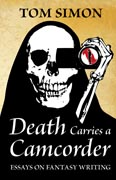Meanwhile, across the river, I have my adult publisher, Orion – and they also have problems with me. Relations between us have been strained ever since they published my Sherlock Holmes novel, The Mouse of Slick, with no fewer than 35 proof-reading errors. Their proof-reader tried to kill herself. She shot herself with a gnu.
—Anthony Horowitz, ‘Do We Still Need Publishers?’
(For those not in on the joke, Mr. Horowitz’s Sherlock Holmes novel is actually called The House of Silk. We think. Unless it really is The Mouse of Slick, and Orion misspelt it on the cover.)








Recent Comments